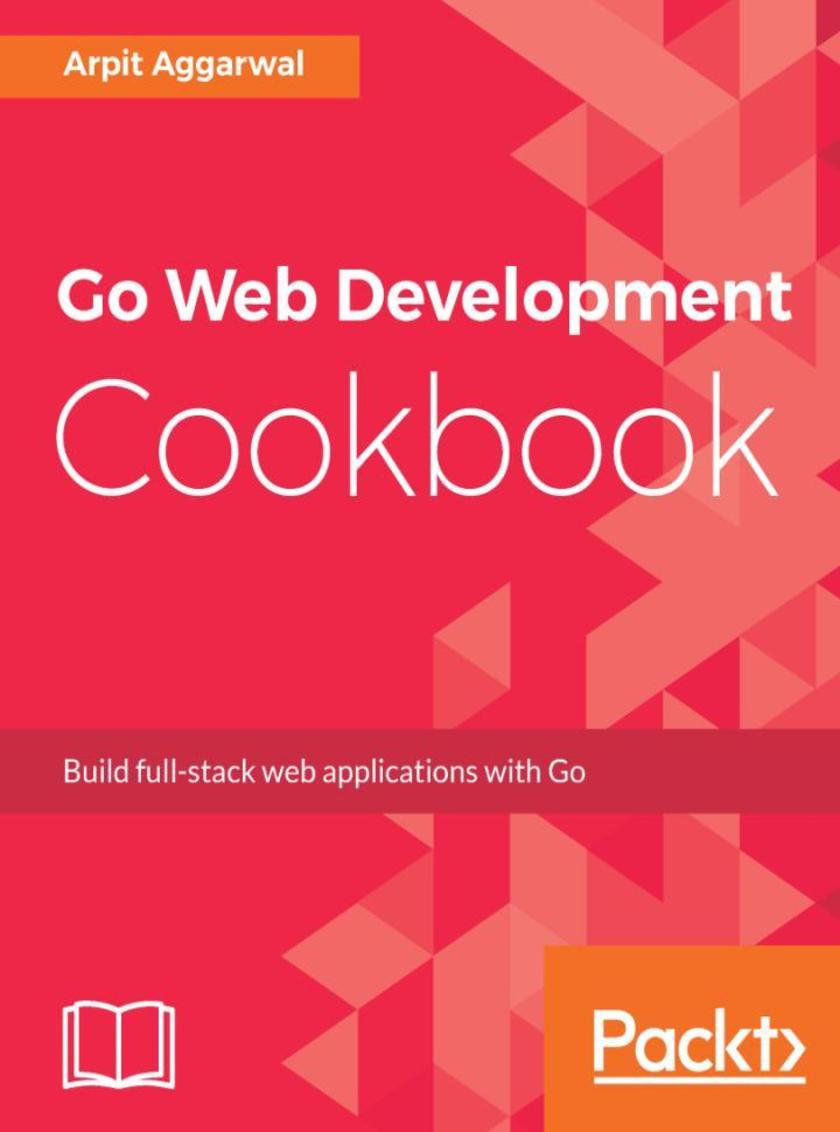
Go Web Development Cookbook
¥81.74
86 recipes on how to build fast, scalable, and powerful web services and applications with Go About This Book ? Become proficient in RESTful web services ? Build scalable, high-performant web applications in Go ? Get acquainted with Go frameworks for web development Who This Book Is For This book is for Go developers interested in learning how to use Go to build powerful web applications. A background in web development is expected. What You Will Learn ? Create a simple HTTP and TCP web server and understand how it works ? Explore record in a MySQL and MongoDB database ? Write and consume RESTful web service in Go ? Invent microservices in Go using Micro – a microservice toolkit ? Create and Deploy the Beego application with Nginx ? Deploy Go web application and Docker containers on an AWS EC2 instance In Detail Go is an open source programming language that is designed to scale and support concurrency at the language level. This gives you the liberty to write large concurrent web applications with ease. From creating web application to deploying them on Amazon Cloud Services, this book will be your one-stop guide to learn web development in Go. The Go Web Development Cookbook teaches you how to create REST services, write microservices, and deploy Go Docker containers. Whether you are new to programming or a professional developer, this book will help get you up to speed with web development in Go. We will focus on writing modular code in Go; in-depth informative examples build the base, one step at a time. You will learn how to create a server, work with static files, SQL, NoSQL databases, and Beego. You will also learn how to create and secure REST services, and create and deploy Go web application and Go Docker containers on Amazon Cloud Services. By the end of the book, you will be able to apply the skills you've gained in Go to create and explore web applications in any domain. Style and approach This book helps you learn core Go concepts faster by taking a recipe-based approach.
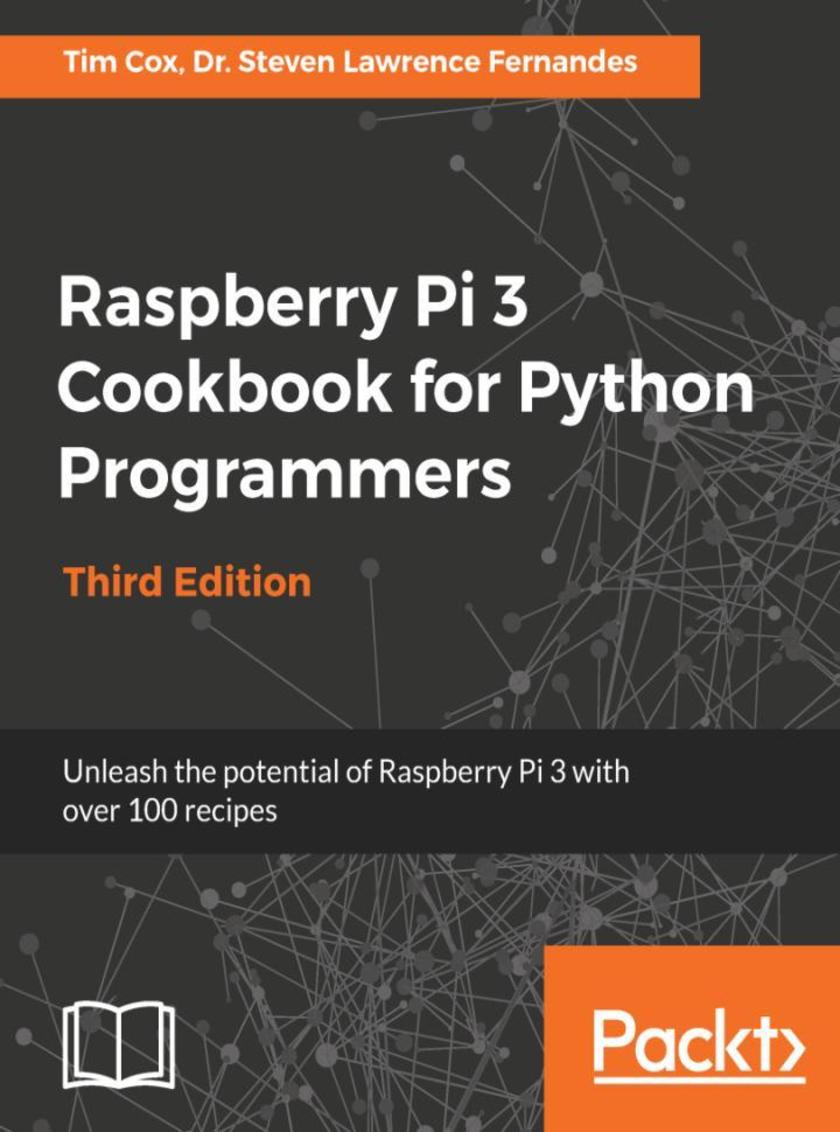
Raspberry Pi 3 Cookbook for Python Programmers
¥63.21
A recipe-based guide to programming your Raspberry Pi 3 using Python About This Book : ? Leverage the power of Raspberry Pi 3 using Python programming ? Create 3D games, build neural network modules, and interface with your own circuits ? Packed with clear, step-by-step recipes to walk you through the capabilities of Raspberry Pi Who This Book Is For : This book is for anyone who wants to master the skills of Python programming using Raspberry Pi 3. Prior knowledge of Python will be an added advantage. What You Will Learn : ? Learn to set up and run Raspberry Pi 3 ? Build text classifiers and perform automation using Python ? Predict sentiments in words and create games and graphics ? Detect edges and contours in images ? Build human face detection and recognition system ? Use Python to drive hardware ? Sense and display real-world data ? Build a neural network module for optical character recognition ? Build movie recommendations system In Detail : Raspberry Pi 3 Cookbook for Python Programmers – Third Edition begins by guiding you through setting up Raspberry Pi 3, performing tasks using Python 3.6, and introducing the first steps to interface with electronics. As you work through each chapter, you will build your skills and apply them as you progress. You will learn how to build text classifiers, predict sentiments in words, develop applications using the popular Tkinter library, and create games by controlling graphics on your screen. You will harness the power of a built in graphics processor using Pi3D to generate your own high-quality 3D graphics and environments. You will understand how to connect Raspberry Pi’s hardware pins directly to control electronics, from switching on LEDs and responding to push buttons to driving motors and servos. Get to grips with monitoring sensors to gather real-life data, using it to control other devices, and viewing the results over the internet. You will apply what you have learned by creating your own Pi-Rover or Pi-Hexipod robots. You will also learn about sentiment analysis, face recognition techniques, and building neural network modules for optical character recognition. Finally, you will learn to build movie recommendations system on Raspberry Pi 3. Style and approach : Written in a cookbook style, this book contains a series of recipes on various topics. It is an easy-to-follow step-by-step guide with examples of feature integration suitable for any search application.
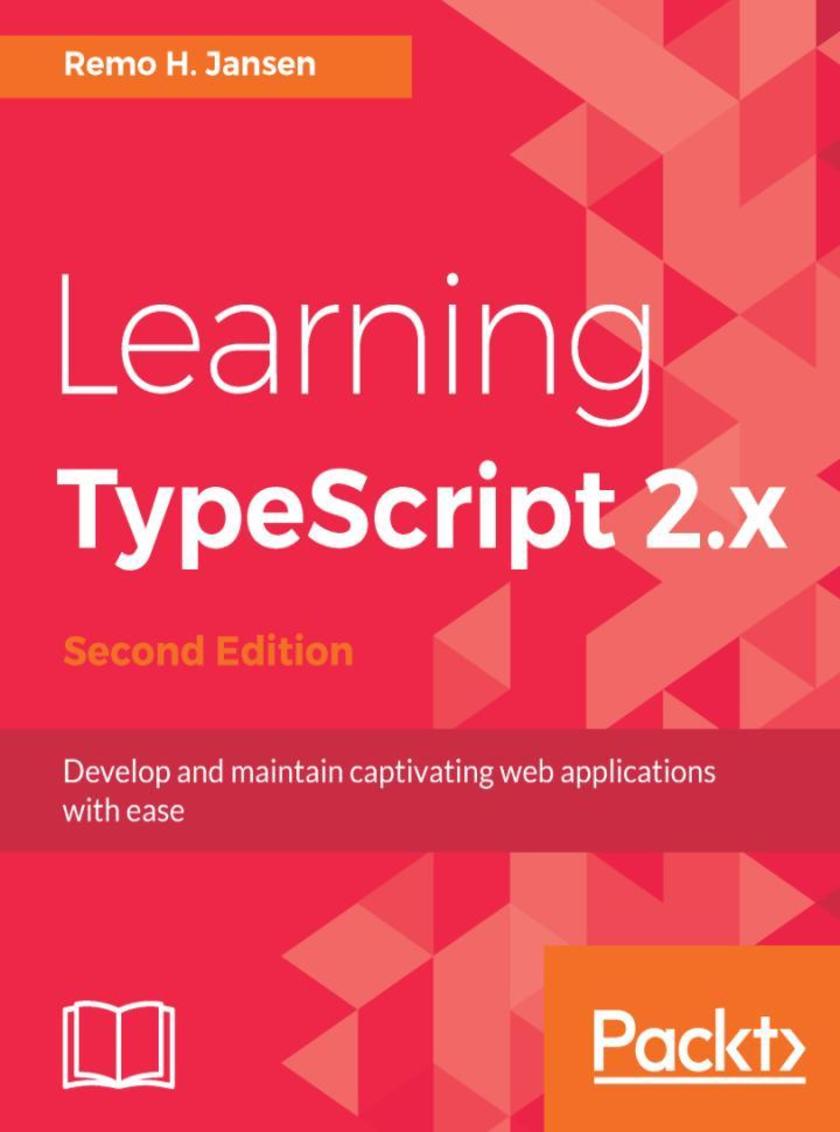
Learning TypeScript 2.x
¥90.46
Exploit the features of TypeScript to easily create your very own web applications About This Book ? Develop modular, scalable, maintainable, and adaptable web applications by taking advantage of TypeScript ? Walk through the fundamentals of TypeScript with the help of practical examples ? Enhance your web development skills using TypeScript 2.x Who This Book Is For If you are a developer aiming to learn TypeScript to build attractive web applications, this book is for you. No prior knowledge of TypeScript is required. However, a basic understanding of JavaScript would be an added advantage. What You Will Learn ? Understand TypeScript in depth, including its runtime and advanced type system features ? Master the core principles of the object-oriented programming and functional programming paradigms with TypeScript ? Save time using automation tools such as Gulp, Webpack, ts-node, and npm scripts ? Develop robust, modular, scalable, maintainable, and adaptable applications with testing frameworks such as Mocha, Chai, and Sinon.JS ? Put your TypeScript skills to practice by developing full-stack web applications with Node.js, React and Angular ? Use the APIs of the TypeScript compiler to build custom code analysis tool In Detail TypeScript is an open source and cross-platform statically typed superset of JavaScript that compiles to plain JavaScript and runs in any browser or host. This book is a step-by-step guide that will take you through the use and benefits of TypeScript with the help of practical examples. You will start off by understanding the basics as well as the new features of TypeScript 2.x. Then, you will learn how to work with functions and asynchronous programming APIs. You will continue by learning how to resolve runtime issues and how to implement TypeScript applications using the Object-oriented programming (OOP) and functional programming (FP) paradigms. Later, you will automate your development workflow with the help of tools such as Webpack. Towards the end of this book, you will delve into some real-world scenarios by implementing some full-stack TypeScript applications with Node.js, React and Angular as well as how to optimize and test them. Finally, you will be introduced to the internal APIs of the TypeScript compiler, and you will learn how to create custom code analysis tools. Style and approach This is a step-by-step guide that covers the fundamentals of TypeScript with practical examples.
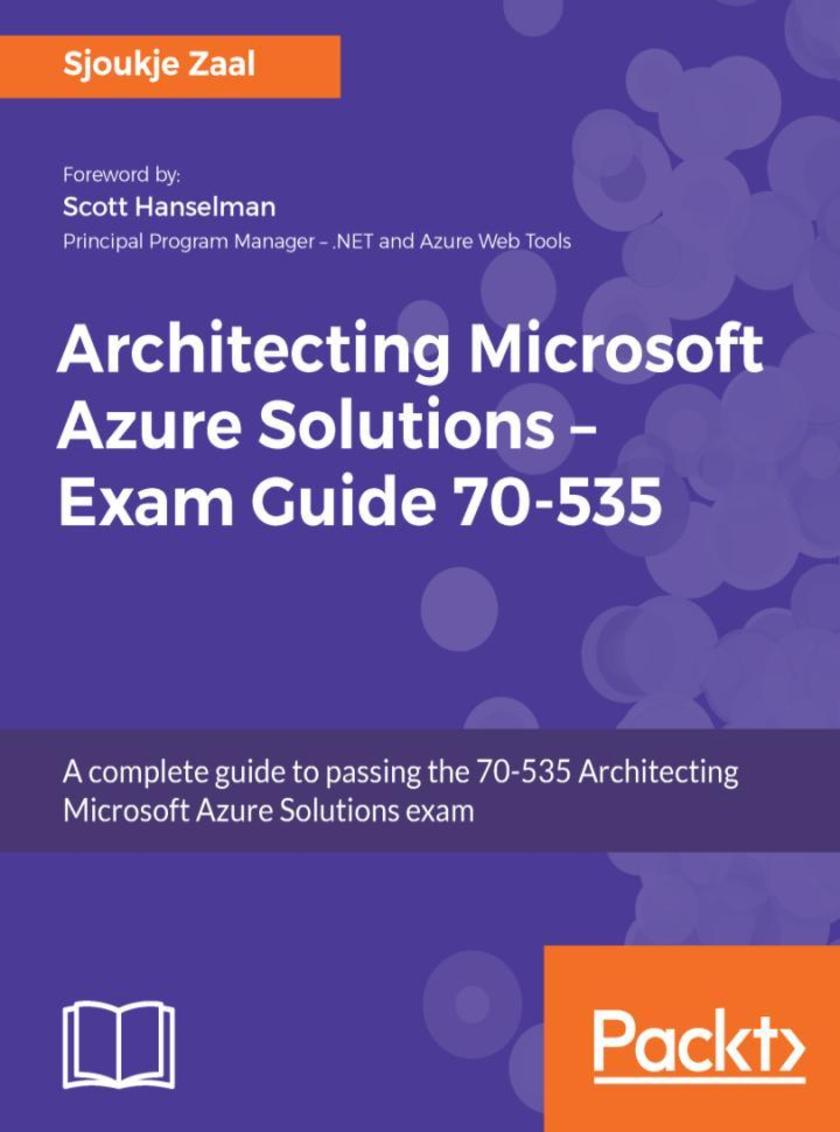
Architecting Microsoft Azure Solutions – Exam Guide 70-535
¥81.74
Get certified as an Azure architect by acing the 70-535 Architecting Microsoft Solutions (70-535) exam using this comprehensive guide with full coverage of the exam objectives About This Book ? Learn to successfully design and architect powerful solutions on the Azure Cloud platform ? Enhance your skills with mock tests and practice questions ? A detailed certification guide that will help you ace the 70-535 exam with confidence Who This Book Is For This book is for architects and experienced developers, who are gearing up for the 70-535 exam. Technical architects interested in learning more about designing Cloud solutions will also find this book useful. What You Will Learn ? Use Azure Virtual Machines to design effective VM deployments ? Implement architecture styles, like serverless computing and microservices ? Secure your data using different security features and design effective security strategies ? Design Azure storage solutions using various storage features ? Create identity management solutions for your applications and resources ? Architect state-of-the-art solutions using Artificial Intelligence, IoT, and Azure Media Services ? Use different automation solutions that are incorporated in the Azure platform In Detail Architecting Microsoft Azure Solutions: Exam Guide 70-535 will get Azure architects and developers up-to-date with the latest updates on Azure from an architecture and design perspective. The book includes all the topics that are still relevant from the previous 70-534 exam, and is updated with latest topics covered, including Artificial Intelligence, IoT, and architecture styles. This exam guide is divided into six parts, where the first part will give you a good understanding of how to design a compute infrastructure. It also dives into designing networking and data implementations. You will learn about designing solutions for Platform Service and operations. Next, you will be able to secure your resources and data, as well as design a mechanism for governance and policies. You will also understand the objective of designing solutions for Platform Services, by covering Artificial Intelligence, IoT, media services, and messaging solution concepts. Finally, you will cover the designing for operations objective. This objective covers application and platform monitoring, as well as designing alerting strategies and operations automation strategies. By the end of the book, you'll have met all of the exam objectives, and will have all the information you need to ace the 70-535 exam. You will also have become an expert in designing solutions on Microsoft Azure. Style and approach This book offers clear and crisp explanations of the exam objectives that will help you with all the information needed to pass the 70-535 exam. The detail oriented approach will make you an expert on designing solutions on Microsoft Azure.
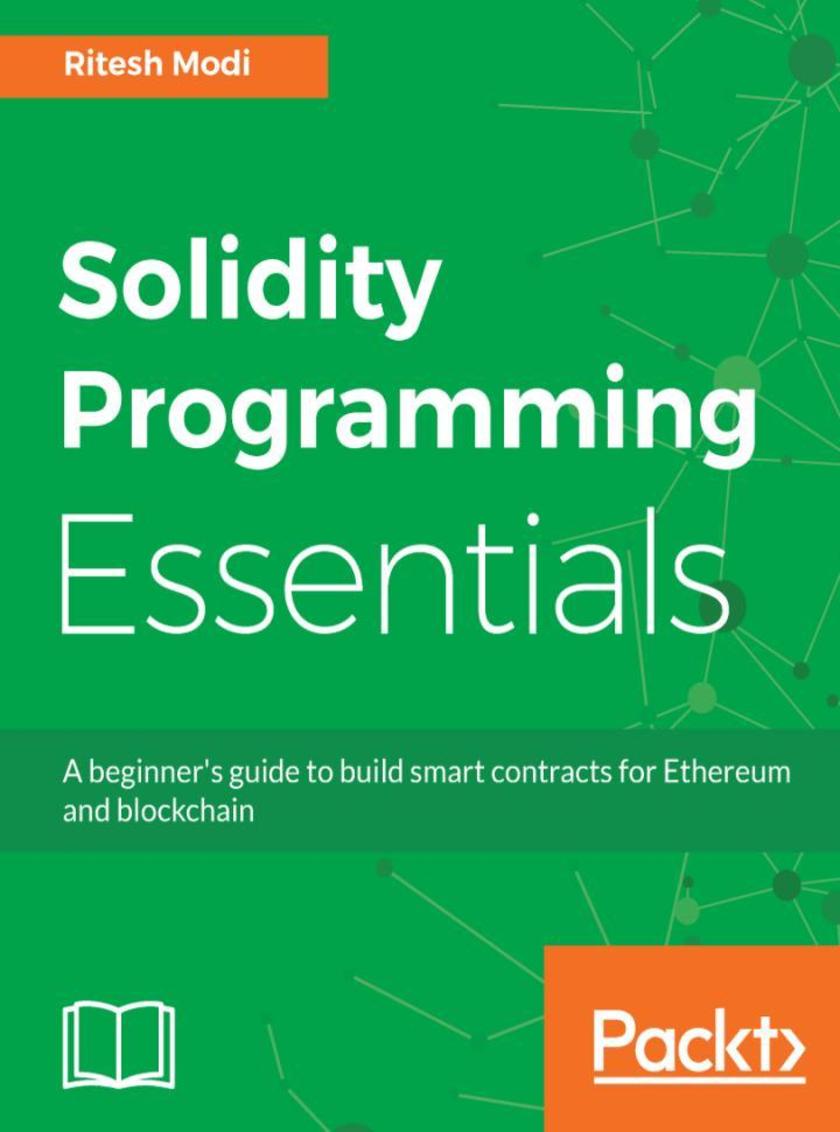
Solidity Programming Essentials
¥63.21
Learn the most powerful and primary programming language for writing smart contracts and find out how to write, deploy, and test smart contracts in Ethereum. About This Book ? Get you up and running with Solidity Programming language ? Build Ethereum Smart Contracts with Solidity as your scripting language ? Learn to test and deploy the smart contract to your private Blockchain Who This Book Is For This book is for anyone who would like to get started with Solidity Programming for developing an Ethereum smart contract. No prior knowledge of EVM is required. What You Will Learn ? Learn the basics and foundational concepts of Solidity and Ethereum ? Explore the Solidity language and its uniqueness in depth ? Create new accounts and submit transactions to blockchain ? Get to know the complete language in detail to write smart contracts ? Learn about major tools to develop and deploy smart contracts ? Write defensive code using exception handling and error checking ? Understand Truffle basics and the debugging process In Detail Solidity is a contract-oriented language whose syntax is highly influenced by JavaScript, and is designed to compile code for the Ethereum Virtual Machine. Solidity Programming Essentials will be your guide to understanding Solidity programming to build smart contracts for Ethereum and blockchain from ground-up. We begin with a brief run-through of blockchain, Ethereum, and their most important concepts or components. You will learn how to install all the necessary tools to write, test, and debug Solidity contracts on Ethereum. Then, you will explore the layout of a Solidity source file and work with the different data types. The next set of recipes will help you work with operators, control structures, and data structures while building your smart contracts. We take you through function calls, return types, function modifers, and recipes in object-oriented programming with Solidity. Learn all you can on event logging and exception handling, as well as testing and debugging smart contracts. By the end of this book, you will be able to write, deploy, and test smart contracts in Ethereum. This book will bring forth the essence of writing contracts using Solidity and also help you develop Solidity skills in no time. Style and approach Solidity is a high-level programming language best understood using examples. After covering basic concepts of Ethereum and Solidity, programming constructs will be explained with help of examples. As chapters progress, deployment, usage and testing of contacts will form major aspect of the book. Troubleshooting and unit testing is an important exercise and skill to master this language will also be covered in this book.
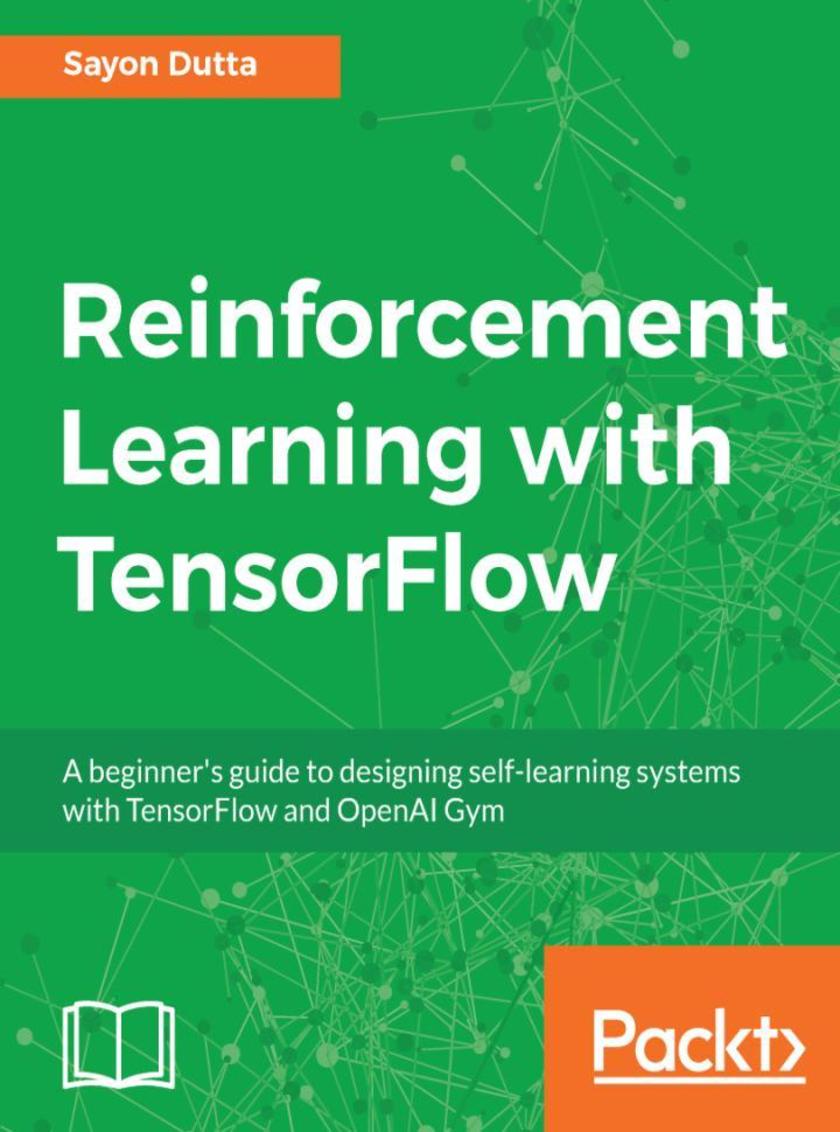
Reinforcement Learning with TensorFlow
¥90.46
Leverage the power of the Reinforcement Learning techniques to develop self-learning systems using Tensorflow About This Book ? Learn reinforcement learning concepts and their implementation using TensorFlow ? Discover different problem-solving methods for Reinforcement Learning ? Apply reinforcement learning for autonomous driving cars, robobrokers, and more Who This Book Is For If you want to get started with reinforcement learning using TensorFlow in the most practical way, this book will be a useful resource. The book assumes prior knowledge of machine learning and neural network programming concepts, as well as some understanding of the TensorFlow framework. No previous experience with Reinforcement Learning is required. What You Will Learn ? Implement state-of-the-art Reinforcement Learning algorithms from the basics ? Discover various techniques of Reinforcement Learning such as MDP, Q Learning and more ? Learn the applications of Reinforcement Learning in advertisement, image processing, and NLP ? Teach a Reinforcement Learning model to play a game using TensorFlow and the OpenAI gym ? Understand how Reinforcement Learning Applications are used in robotics In Detail Reinforcement Learning (RL), allows you to develop smart, quick and self-learning systems in your business surroundings. It is an effective method to train your learning agents and solve a variety of problems in Artificial Intelligence—from games, self-driving cars and robots to enterprise applications that range from datacenter energy saving (cooling data centers) to smart warehousing solutions. The book covers the major advancements and successes achieved in deep reinforcement learning by synergizing deep neural network architectures with reinforcement learning. The book also introduces readers to the concept of Reinforcement Learning, its advantages and why it’s gaining so much popularity. The book also discusses on MDPs, Monte Carlo tree searches, dynamic programming such as policy and value iteration, temporal difference learning such as Q-learning and SARSA. You will use TensorFlow and OpenAI Gym to build simple neural network models that learn from their own actions. You will also see how reinforcement learning algorithms play a role in games, image processing and NLP. By the end of this book, you will have a firm understanding of what reinforcement learning is and how to put your knowledge to practical use by leveraging the power of TensorFlow and OpenAI Gym. Style and approach An Easy-to-follow, step-by-step guide to help you get to grips with real-world applications of Reinforcement Learning with TensorFlow.
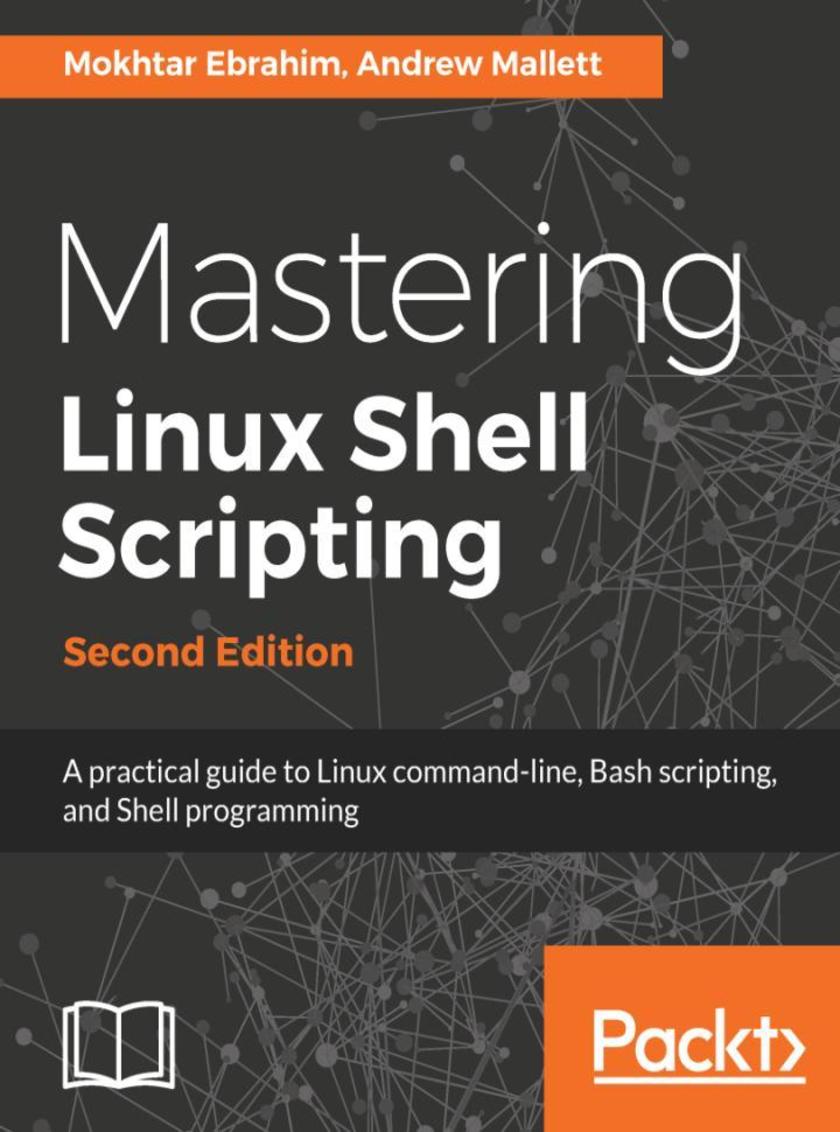
Mastering Linux Shell Scripting
¥63.21
Master the complexities of Bash shell scripting and unlock the power of shell for your enterprise About This Book ? Identify high-level steps such as verifying user input ? Using the command line and conditional statements in creating/executing simple shell scripts ? Create and edit dynamic shell scripts to manage complex and repetitive tasks ? Leverage the command-line to bypass GUI and automate common tasks Who This Book Is For If you are a Linux administrator or a system administrator and are interested in automating tasks in your daily lives, saving time and effort, this book is for you. Basic shell scripting and command-line experience will be required. Familiarity with the tasks you need to automate will be helpful. What You Will Learn ? Make, execute, and debug your first Bash script ? Create interactive scripts that prompt for user input ? Foster menu structures for operators with little command-line experience ? Develop scripts that dynamically edit web configuration files to produce a new virtual host ? Write scripts that use AWK to search and reports on log files ? Draft effective scripts using functions as building blocks, reducing maintenance and build time ? Make informed choices by comparing different script languages such as Python with BASH In Detail In this book, you’ll discover everything you need to know to master shell scripting and make informed choices about the elements you employ. Grab your favorite editor and start writing your best Bash scripts step by step. Get to grips with the fundamentals of creating and running a script in normal mode, and in debug mode. Learn about various conditional statements' code snippets, and realize the power of repetition and loops in your shell script. You will also learn to write complex shell scripts. This book will also deep dive into file system administration, directories, and system administration like networking, process management, user authentications, and package installation and regular expressions. Towards the end of the book, you will learn how to use Python as a BASH Scripting alternative. By the end of this book, you will know shell scripts at the snap of your fingers and will be able to automate and communicate with your system with keyboard expressions. Style and approach The book will capture your attention and keep you engaged with the simplicity and clarity of each explanation. Every step is accompanied by screenshots so you can cross-check the results before moving on.
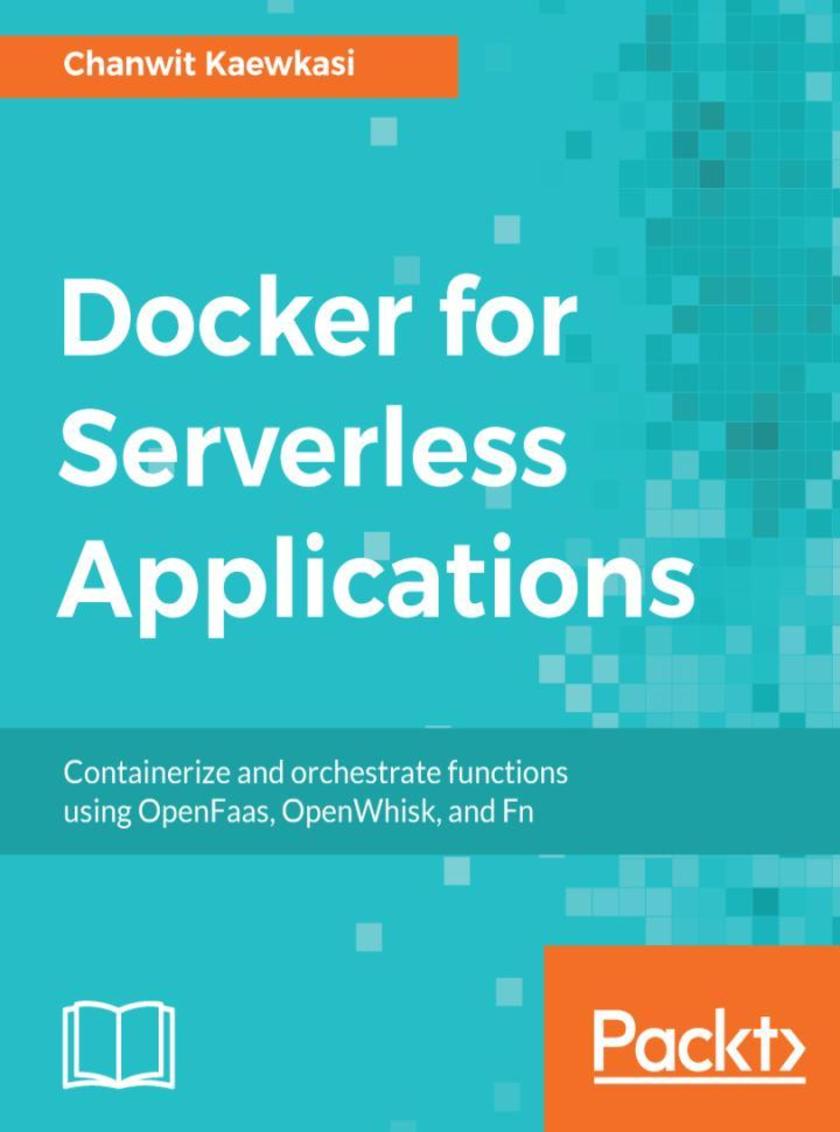
Docker for Serverless Applications
¥73.02
Build applications and infrastructures that leverage Function-as-a-Service and Docker About This Book ? Implement containerization in Serverless/FaaS environments ? Utilize Docker as a functional unit of work for Serverless/FaaS platforms ? Use Docker as a portable infrastructure for Serverless Applications Who This Book Is For If you are a Developer, a Docker Engineer, a DevOps Engineer, or any stakeholder interested in learning the use of Docker on Serverless environments then this book is for you. What You Will Learn ? Learn what Serverless and FaaS applications are ? Get acquainted with the architectures of three major serverless systems ? Explore how Docker technologies can help develop Serverless applications ? Create and maintain FaaS infrastructures ? Set up Docker infrastructures to serve as on-premises FaaS infrastructures ? Define functions for Serverless applications with Docker containers In Detail Serverless applications have gained a lot of popularity among developers and are currently the buzzwords in the tech market. Docker and serverless are two terms that go hand-in-hand. This book will start by explaining serverless and Function-as-a-Service (FaaS) concepts, and why they are important. Then, it will introduce the concepts of containerization and how Docker fits into the Serverless ideology. It will explore the architectures and components of three major Docker-based FaaS platforms, how to deploy and how to use their CLI. Then, this book will discuss how to set up and operate a production-grade Docker cluster. We will cover all concepts of FaaS frameworks with practical use cases, followed by deploying and orchestrating these serverless systems using Docker. Finally, we will also explore advanced topics and prototypes for FaaS architectures in the last chapter. By the end of this book, you will be in a position to build and deploy your own FaaS platform using Docker. Style and approach A practical guide that offers a simple way to easily understand Serverless Applications utilizing Docker as the development environment.
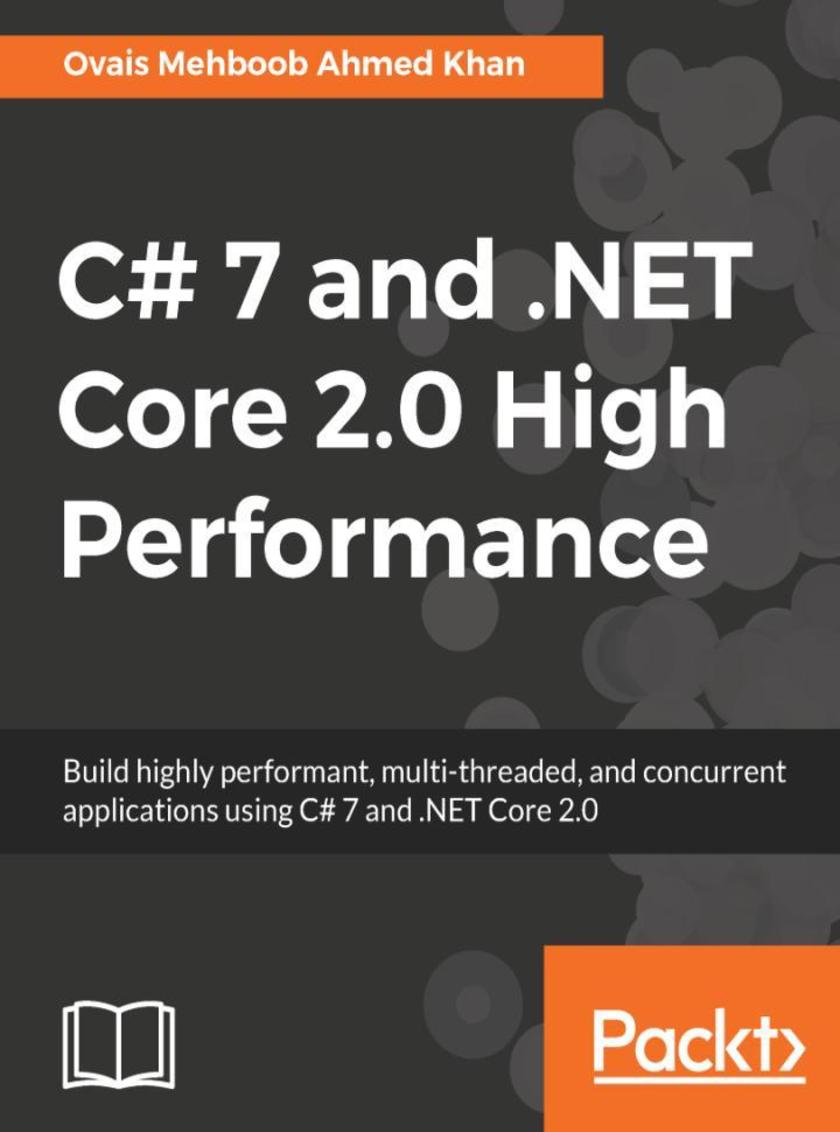
C# 7 and .NET Core 2.0 High Performance
¥81.74
Improve the speed of your code and optimize the performance of your apps About This Book ? Understand the common performance pitfalls and improve your application’s performance ? Get to grips with multi-threaded and asynchronous programming in C# ? Develop highly performant applications on .NET Core using microservice architecture Who This Book Is For This book is for .NET developers looking at improving the speed of their code or simply wanting to take their skills to the next level. Basic C# knowledge is assumed. What You Will Learn ? Measure application performance using BenchmarkDotNet ? Explore the techniques to write multithreaded applications ? Leverage TPL and PLinq libraries to perform asynchronous operations ? Get familiar with data structures to write optimized code ? Understand design techniques to increase your application’s performance ? Learn about memory management techniques in .NET Core ? Develop a containerized application based on microservices architecture ? Learn tools and techniques to monitor application performance In Detail While writing an application, performance is paramount. Performance tuning for realworld applications often involves activities geared toward fnding bottlenecks; however, this cannot solve the dreaded problem of slower code. If you want to improve the speed of your code and optimize an application's performance, then this book is for you. C# 7 and .NET Core 2.0 High Performance begins with an introduction to the new features of what?explaining how they help in improving an application's performance. Learn to identify the bottlenecks in writing programs and highlight common performance pitfalls, and learn strategies to detect and resolve these issues early. You will explore multithreading and asynchronous programming with .NET Core and learn the importance and effcient use of data structures. This is followed with memory management techniques and design guidelines to increase an application’s performance. Gradually, the book will show you the importance of microservices architecture for building highly performant applications and implementing resiliency and security in .NET Core. After reading this book, you will learn how to structure and build scalable, optimized, and robust applications in C#7 and .NET. Style and approach This book will be a step by step easy to follow guide with focused examples to increase performance of applications and provide optimization techniques.

Hands-On Machine Learning on Google Cloud Platform
¥81.74
Unleash Google's Cloud Platform to build, train and optimize machine learning models About This Book ? Get well versed in GCP pre-existing services to build your own smart models ? A comprehensive guide covering aspects from data processing, analyzing to building and training ML models ? A practical approach to produce your trained ML models and port them to your mobile for easy access Who This Book Is For This book is for data scientists, machine learning developers and AI developers who want to learn Google Cloud Platform services to build machine learning applications. Since the interaction with the Google ML platform is mostly done via the command line, the reader is supposed to have some familiarity with the bash shell and Python scripting. Some understanding of machine learning and data science concepts will be handy What You Will Learn ? Use Google Cloud Platform to build data-based applications for dashboards, web, and mobile ? Create, train and optimize deep learning models for various data science problems on big data ? Learn how to leverage BigQuery to explore big datasets ? Use Google’s pre-trained TensorFlow models for NLP, image, video and much more ? Create models and architectures for Time series, Reinforcement Learning, and generative models ? Create, evaluate, and optimize TensorFlow and Keras models for a wide range of applications In Detail Google Cloud Machine Learning Engine combines the services of Google Cloud Platform with the power and flexibility of TensorFlow. With this book, you will not only learn to build and train different complexities of machine learning models at scale but also host them in the cloud to make predictions. This book is focused on making the most of the Google Machine Learning Platform for large datasets and complex problems. You will learn from scratch how to create powerful machine learning based applications for a wide variety of problems by leveraging different data services from the Google Cloud Platform. Applications include NLP, Speech to text, Reinforcement learning, Time series, recommender systems, image classification, video content inference and many other. We will implement a wide variety of deep learning use cases and also make extensive use of data related services comprising the Google Cloud Platform ecosystem such as Firebase, Storage APIs, Datalab and so forth. This will enable you to integrate Machine Learning and data processing features into your web and mobile applications. By the end of this book, you will know the main difficulties that you may encounter and get appropriate strategies to overcome these difficulties and build efficient systems. Style and approach An easy-to-follow step by step guide which will help you get to the grips with real-world applications of Google Cloud Machine Learning.
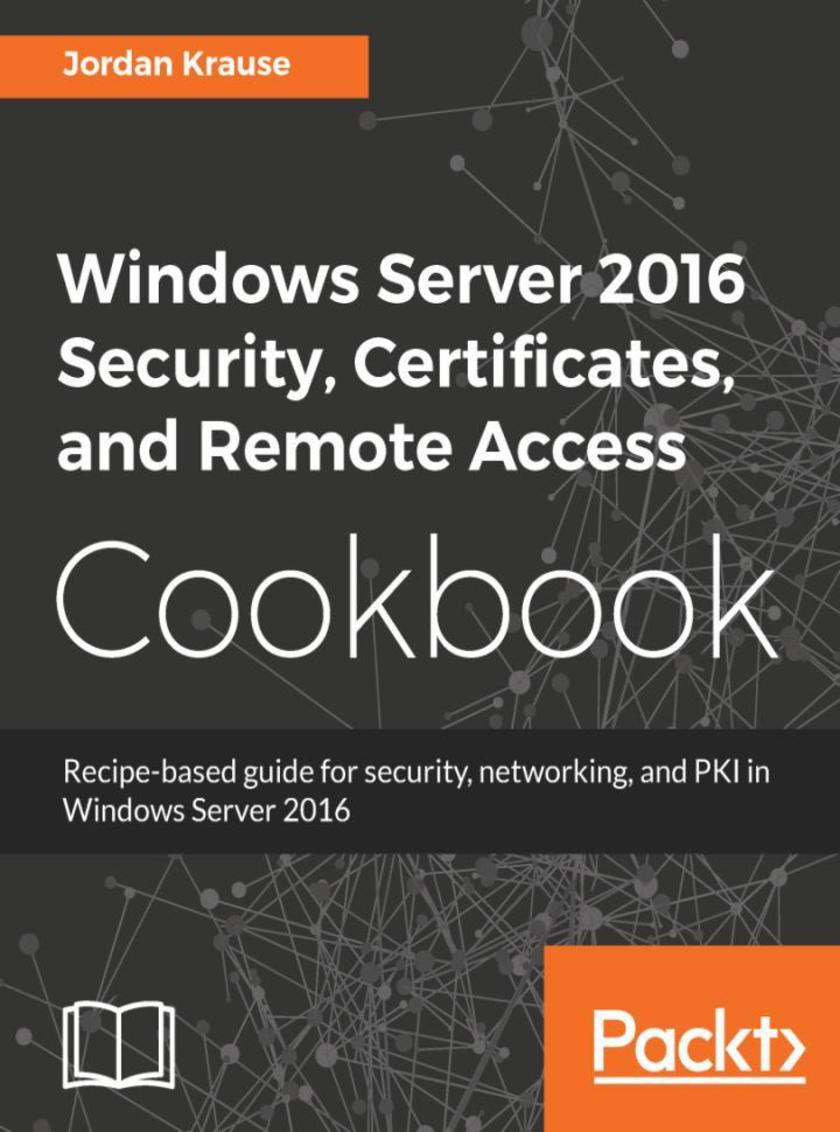
Windows Server 2016 Security, Certificates, and Remote Access Cookbook
¥54.49
This book contains more than 25 hands-on recipes that will equip you to build a PKI and roll out remote access capabilities via Microsoft DirectAccess and VPN. This book also contains tips and tricks for increasing the security footprint of your Windows Server infrastructure. About This Book ? Identify and mitigate security risks in your Windows Server 2016 infrastructure ? Learn how to build a PKI and use it to issue certificates within your network ? In-depth information for setting up Microsoft DirectAccess Who This Book Is For If you are a Windows Server administrator interested in learning the key security and networking functions available in Windows Server 2016, keep this book close at hand. If you are a server administrator setting up certificate services for the first time you will also benefit from the step-by-step instructions on implementation of a PKI. What You Will Learn ? Implement solid networking and security practices into your Windows Server environment ? Design your own PKI and start issuing certificates today ? Connect your remote laptops back to the corporate network using Microsoft's own remote access technologies, including DirectAccess ? Learn to use commands that will help you with monitoring network traffic. ? Build and explore your first Server Core instance today! In Detail Windows Server 2016 is an operating system designed to run on today's highly performant servers, both on-premise and in the cloud. It supports enterprise-level data storage, communications, management, and applications. This book builds off a basic knowledge of the Windows Server operating system, and assists administrators with taking the security of their systems one step further. You will learn tips for configuring proper networking, especially on multi-homed systems, and tricks for locking down access to your servers. Then you will move onto one of the hottest security topics of the year – certificates. You will learn how to build your own PKI, or how to better administer one that you already have. You will publish templates, issue certificates, and even configure autoenrollment in your network. When we say "networking" we don't only mean inside the LAN. To deal safely with mobile devices, you will learn about the capabilities of Windows Server 2016 for connecting these assets securely back into the corporate network, with information about DirectAccess and VPN. The material in the book has been selected from the content of Packt's Windows Server 2016 Cookbook by Jordan Krause to provide a specific focus on these key Windows Server tasks. Style and approach This book is a quick recipe-based guide on Windows Server 2016. The book starts with an introduction to securing servers and properly configuring network settings, then moves on to establishing certificate services using Windows Server 2016. Finally we explore the connection of remote laptops to the corporate network using DirectAccess and VPN.
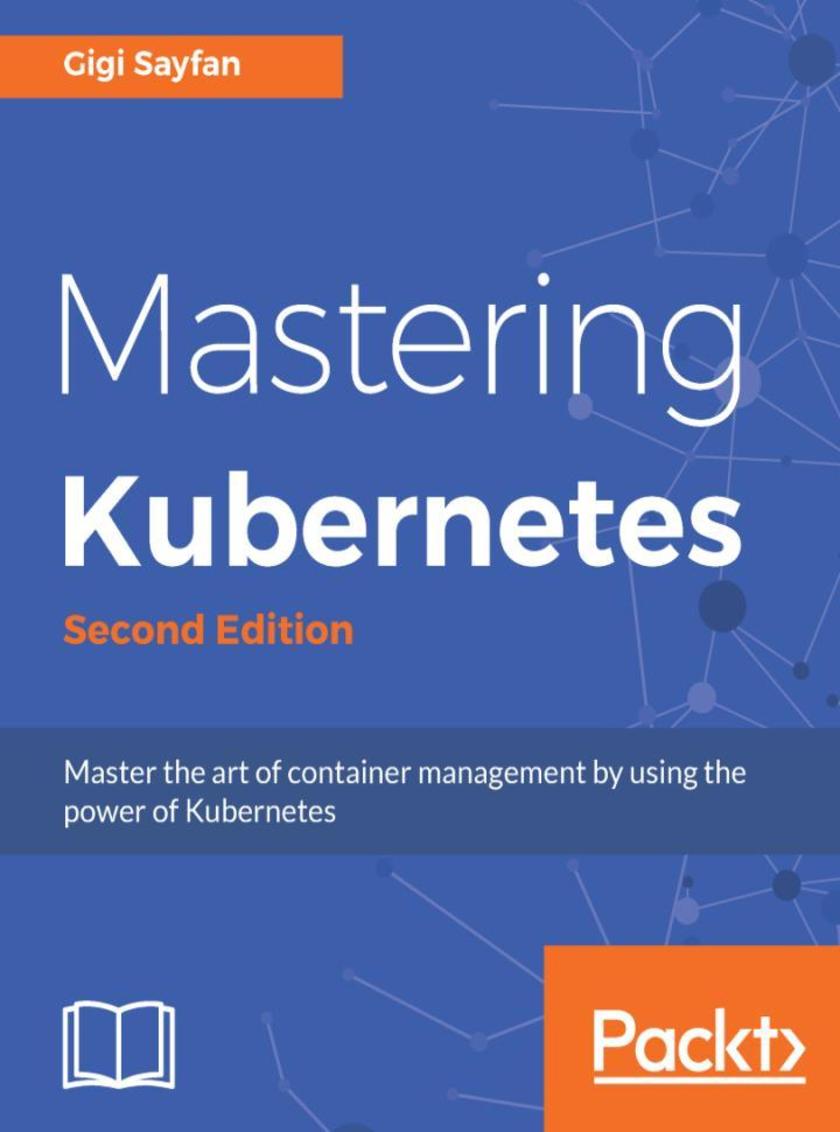
Mastering Kubernetes
¥81.74
Exploit design, deployment, and management of large-scale containers About This Book ? Explore the latest features available in Kubernetes 1.10 ? Ensure that your clusters are always available, scalable, and up to date ? Master the skills of designing and deploying large clusters on various cloud platforms Who This Book Is For Mastering Kubernetes is for you if you are a system administrator or a developer who has an intermediate understanding of Kubernetes and wish to master its advanced features. Basic knowledge of networking would also be helpful. In all, this advanced-level book provides a smooth pathway to mastering Kubernetes. What You Will Learn ? Architect a robust Kubernetes cluster for long-time operation ? Discover the advantages of running Kubernetes on GCE, AWS, Azure, and bare metal ? Understand the identity model of Kubernetes, along with the options for cluster federation ? Monitor and troubleshoot Kubernetes clusters and run a highly available Kubernetes ? Create and configure custom Kubernetes resources and use third-party resources in your automation workflows ? Enjoy the art of running complex stateful applications in your container environment ? Deliver applications as standard packages In Detail Kubernetes is an open source system that is used to automate the deployment, scaling, and management of containerized applications. If you are running more containers or want automated management of your containers, you need Kubernetes at your disposal. To put things into perspective, Mastering Kubernetes walks you through the advanced management of Kubernetes clusters. To start with, you will learn the fundamentals of both Kubernetes architecture and Kubernetes design in detail. You will discover how to run complex stateful microservices on Kubernetes including advanced features such as horizontal pod autoscaling, rolling updates, resource quotas, and persistent storage backend. Using real-world use cases, you will explore the options for network configuration, and understand how to set up, operate, and troubleshoot various Kubernetes networking plugins. In addition to this, you will get to grips with custom resource development and utilization in automation and maintenance workflows. To scale up your knowledge of Kubernetes, you will encounter some additional concepts based on the Kubernetes 1.10 release, such as Promethus, Role-based access control, API aggregation, and more. By the end of this book, you’ll know everything you need to graduate from intermediate to advanced level of understanding Kubernetes. Style and approach Delving into the design of the Kubernetes platform, the reader will be exposed to Kubernetes advanced features and best practices. This advanced-level book will provide a pathway to mastering Kubernetes.
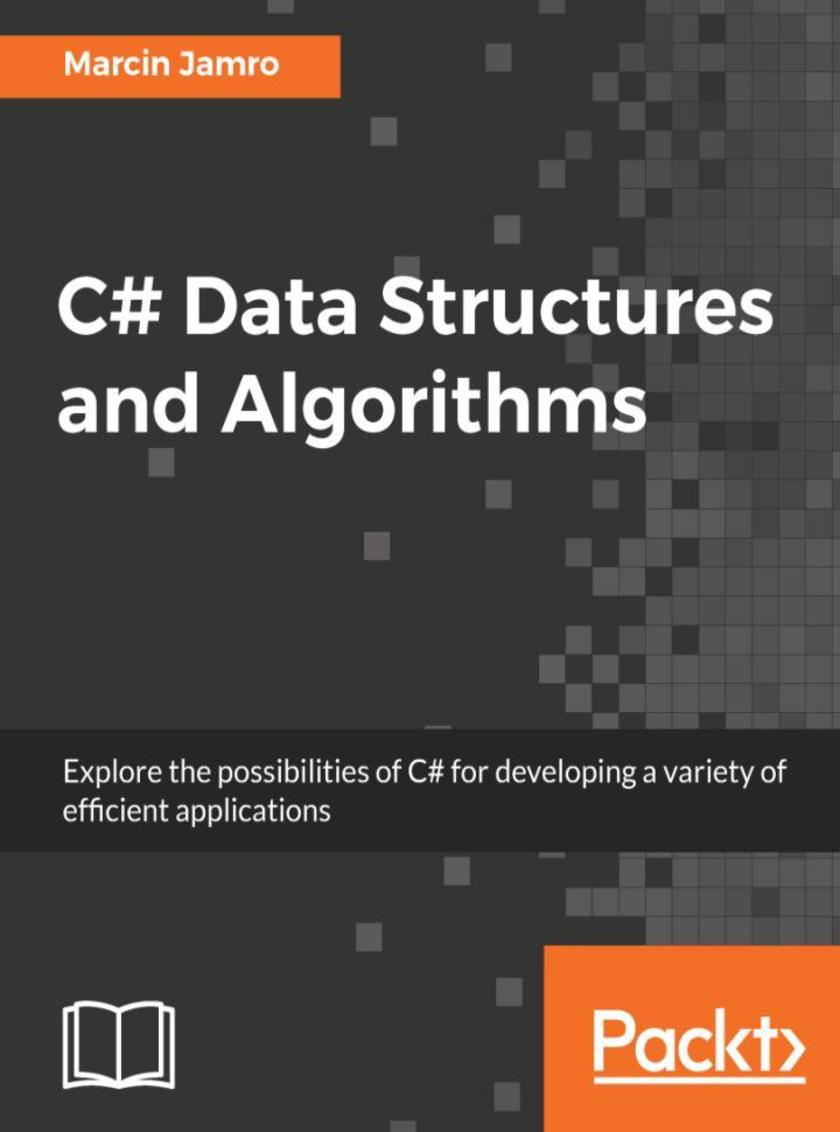
C# Data Structures and Algorithms
¥90.46
A complete guide on using data structures and algorithms to write sophisticated C# code About This Book ? Master array, set and map with trees and graphs, among other fundamental data structures ? Delve into effective design and implementation techniques to meet your software requirements ? Explore illustrations to present data structures and algorithms, as well as their analysis in a clear, visual manner. Who This Book Is For This book is for developers who would like to learn the Data Structures and Algorithms in C#. Basic C# programming knowledge would be an added advantage. What You Will Learn ? How to use arrays and lists to get better results in complex scenarios ? Implement algorithms like the Tower of Hanoi on stacks of C# objects ? Build enhanced applications by using hashtables, dictionaries and sets ? Make a positive impact on efficiency of applications with tree traversal ? Effectively find the shortest path in the graph In Detail Data structures allow organizing data efficiently. They are critical to various problems and their suitable implementation can provide a complete solution that acts like reusable code. In this book, you will learn how to use various data structures while developing in the C# language as well as how to implement some of the most common algorithms used with such data structures. At the beginning, you will get to know arrays, lists, dictionaries, and sets together with real-world examples of your application. Then, you will learn how to create and use stacks and queues. In the following part of the book, the more complex data structures will be introduced, namely trees and graphs, together with some algorithms for searching the shortest path in a graph. We will also discuss how to organize the code in a manageable, consistent, and extendable way. By the end of the book,you will learn how to build components that are easy to understand, debug, and use in different applications. Style and approach Readers will be taken through all the indispensable data structures and algorithms so they can begin their coding journey in C#. At each step, the book will show how to implement these via examples while also discussing the attributes of each algorithm so readers are capable to make an informed choice.

Phoenix Web Development
¥73.02
Learn to build a high-performance functional prototype of a voting web application from scratch using Elixir and Phoenix About This Book ? Build a strong foundation in Functional-Programming techniques while learning to build compelling web applications ? Understand the Elixir Concurrency and parallelization model to build high-performing blazingly fast applications ? Learn to test, debug and deploy your web applications using Phoenix framework Who This Book Is For This book is for people with a basic knowledge of Elixir, who want to start building web applications. Prior experience with web technologies is assumed. What You Will Learn ? Learn Phoenix Framework fundamentals and v1.3's new application structure ? Build real-time applications with channels and presence ? Utilize GenServers and other OTP fundamentals to keep an application stable ? Track users as they sign in and out of chat with Phoenix’s built-in presence functionality ? Write your own database interaction code that is safe, bug-free, and easy to work with ? Explore testing and debugging methodologies to understand a real software development lifecycle for a Phoenix application ? Deploy and run your Phoenix application in production In Detail Phoenix is a modern web development framework that is used to build API’s and web applications. It is built on Elixir and runs on Erlang VM which makes it much faster than other options. With Elixir and Phoenix, you build your application the right way, ready to scale and ready for the increasing demands of real-time web applications. This book covers the basics of the Phoenix web framework, showing you how to build a community voting application, and is divided into three parts. In the first part, you will be introduced to Phoenix and Elixir and understand the core terminologies that are used to describe them. You will also learn to build controller pages, store and retrieve data, add users to your app pages and protect your database. In the second section you will be able to reinforce your knowledge of architecting real time applications in phoenix and not only debug these applications but also diagnose issues in them. In the third and final section you will have the complete understanding of deploying and running the phoenix application and should be comfortable to make your first application release By the end of this book, you'll have a strong grasp of all of the core fundamentals of the Phoenix framework, and will have built a full production-ready web application from scratch. Style and approach Covers the basics of the Phoenix web framework by building a complete real-time application and showing the new structure changes introduced in Phoenix v1.3
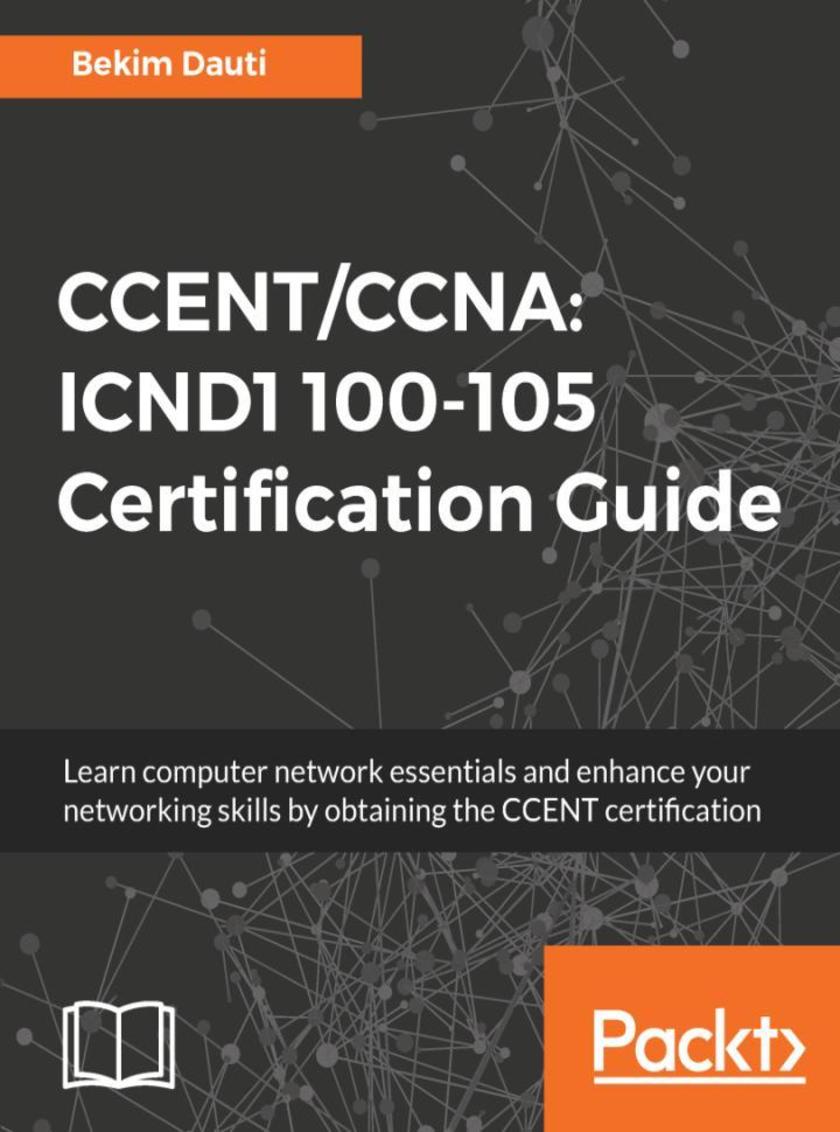
CCENT/CCNA: ICND1 100-105 Certification Guide
¥54.49
Become familiar with ICND1 (100-105) exam objectives, and learn how to get ready for the exam About This Book ? A step by step guide that will build you skills from basic concepts to completely understanding network communication ? Comprehensive coverage to help you implement the knowledge you've gained in real-world scenarios ? Take practice questions and mock tests to check how prepared you are for the CCENT exam Who This Book Is For If you are a Network Administrator, Network Technician, Networking professional, or would simply like to prepare for your CCENT certification, then this book is for you. Some basic understanding of networks and how they work would be helpful. Sufficient information will be provided to those new to this field. What You Will Learn ? Get to grips with the computer network concepts ? Understand computer network components and learn to create a computer network ? Understand switching and learn how to configure a switch ? Understand routing and learn how to configure a router ? Understand network services and the maintenance process ? Learn how to troubleshoot networking issues ? Become familiar with, and learn how to prepare for, the ICND1 100-105 exam In Detail CCENT is the entry-level certification for those looking to venture into the networking world. This guide will help you stay up-to date with your networking skills. This book starts with the basics and will take you through everything essential to pass the certification exam. It extensively covers IPv4 and IPv6 addressing, IP data networks, switching and routing, network security, and much more—all in some detail. This guide will provide real-world examples with a bunch of hands-on labs to give you immense expertise in important networking tasks, with a practical approach. Each chapter consists of practice questions to help you take up a challenge from what you have procured. This book ends with mock tests with several examples to help you confidently pass the certification. This Certification Guide consists of everything you need to know in order to pass the ICND 1 100-105 Exam, thus obtaining a CCENT certification. However, practicing with real switches and routers or a switch or router simulator will help you succeed. Style and approach This book is for everyone! It will help beginners who are taking their first steps into the world of computer networks. At the same time, this book can be used by intermediate and advanced network administrators to recap computer network concepts. It will be a handy certification guide for anyone who is studying and preparing to take the Interconnecting Cisco Networking Devices Part 1 (100-105) exam, thus obtaining CCENT certification, which will be a handy professional asset.
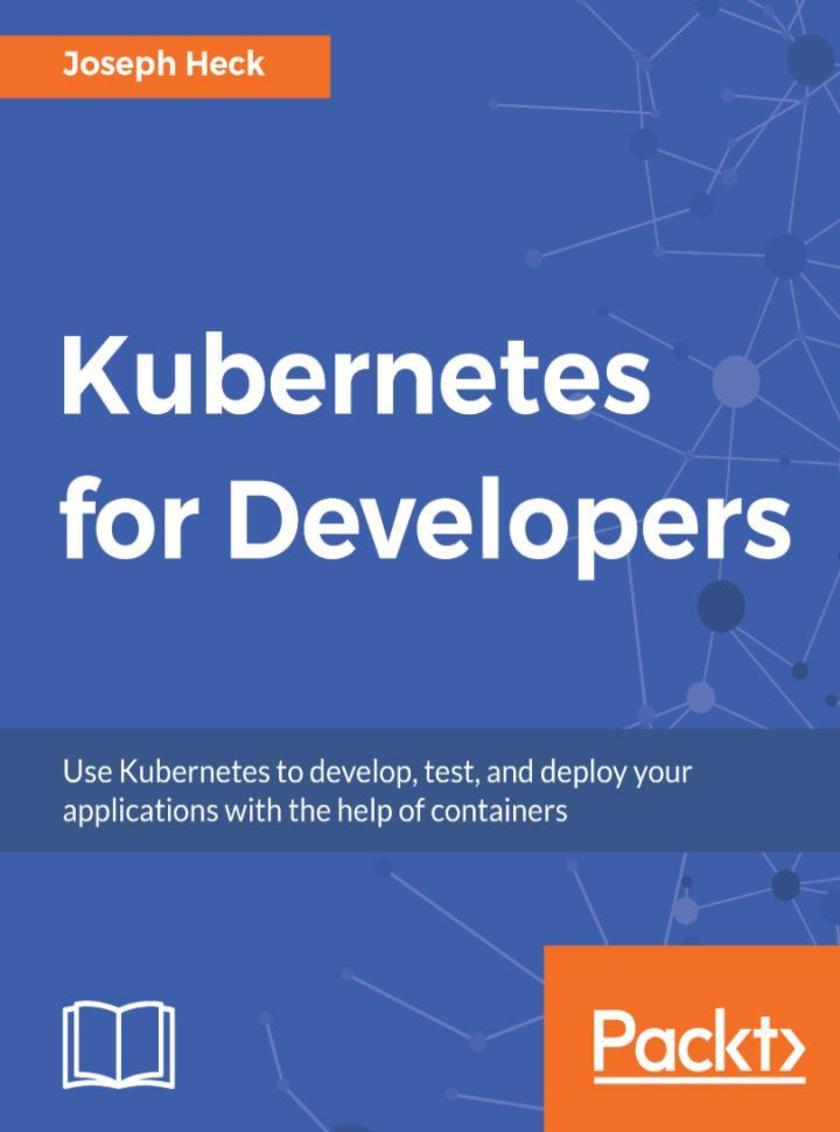
Kubernetes for Developers
¥81.74
A developer's field-guide to designing scalable services using Kubernetes About This Book ? Develop and run your software using containers within a Kubernetes environment ? Get hands-on experience of using Kubernetes with DevOps concepts such as continuous integration, benchmark testing, monitoring, and so on ? Pragmatic example-based approach showing how to use Kubernetes in the development process Who This Book Is For If you are a full-stack or back-end software developers interested, curious, or being asked to test as well as run the code you're creating, you can leverage Kubernetes to make that process simpler and consistent regardless of where you deploy. If you're looking for developer focused examples in NodeJS and Python for how to build, test, deploy, and run your code with Kubernetes, this is perfect for you. What You Will Learn ? Build your software into containers ? Deploy and debug software running in containers within Kubernetes ? Declare and add configuration through Kubernetes ? Define how your application fits together, using internal and external services ? Add feedback to your code to help Kubernetes manage your services ? Monitor and measure your services through integration testing and in production deployments In Detail Kubernetes is documented and typically approached from the perspective of someone running software that has already been built. Kubernetes may also be used to enhance the development process, enabling more consistent testing and analysis of code to help developers verify not only its correctness, but also its efficiency. This book introduces key Kubernetes concepts, coupled with examples of how to deploy and use them with a bit of Node.js and Python example code, so that you can quickly replicate and use that knowledge. You will begin by setting up Kubernetes to help you develop and package your code. We walk you through the setup and installation process before working with Kubernetes in the development environment. We then delve into concepts such as automating your build process, autonomic computing, debugging, and integration testing. This book covers all the concepts required for a developer to work with Kubernetes. By the end of this book, you will be in a position to use Kubernetes in development ecosystems. Style and approach This book will cover examples using NodeJS and Python that walk you through building containers, defining your deployments, deploying, debugging, testing, and generally interacting with your code running on Kubernetes. The examples are focused on common development needs, and include pragmatic advice and the explanations behind that advice.
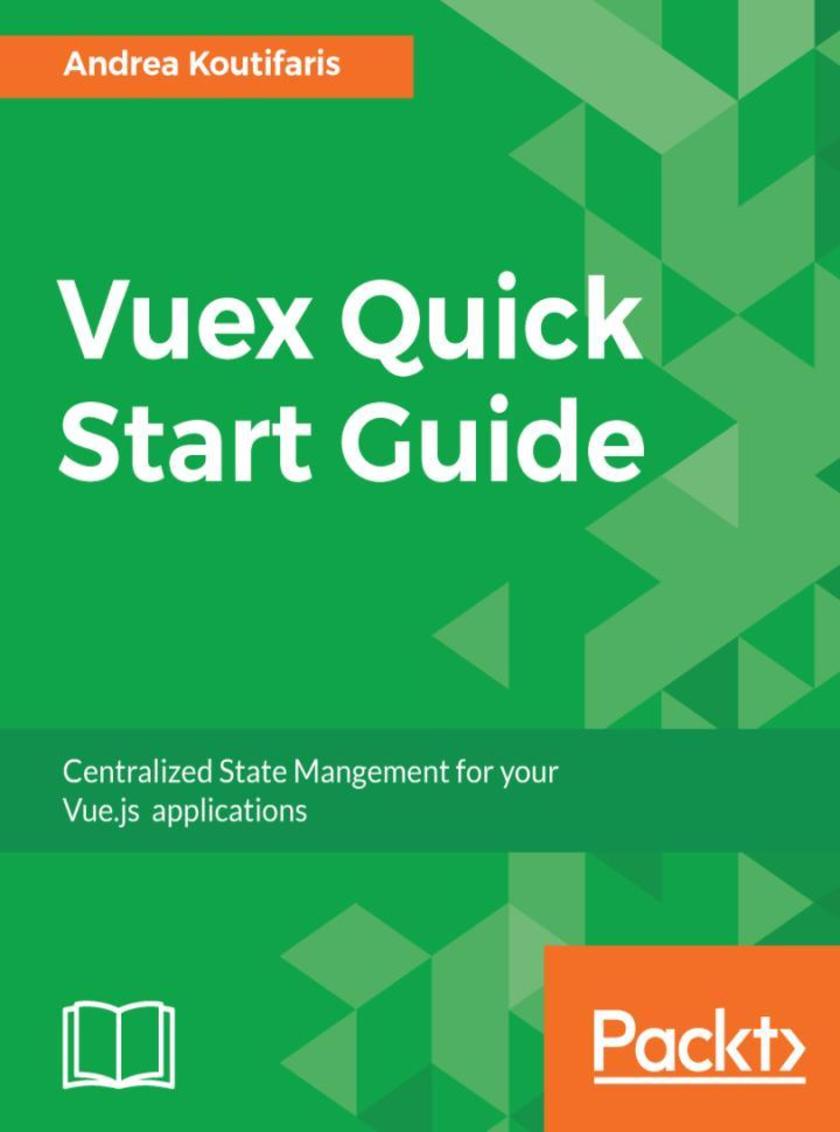
Vuex Quick Start Guide
¥54.49
Develop consistent web apps with Vuex by easily centralizing the state of your application About This Book ? Uncover the hidden features of Vuex to build applications that are powerful, consistent, and maintainable ? Enforce a Flux-like application architecture in your Vue application ? Test your Vuex elements and Vue components using Karma/Jasmine testing framework Who This Book Is For If you are a JavaScript developer, working on Vue.js and want to extend your web development skills to develop and maintain bigger applications using state management, then this book is for you. No knowledge of Vuex is required. What You Will Learn ? Moving from classical MVC to a Flux-like architecture ? Implementing predictable centralized state management in your applications using Vuex ? Using ECMAScript 6 features for developing a real application ? Using webpack in conjunction with Vue single file components ? Testing your Vue/Vuex applications using Karma/Jasmine and inject-loader ? Simple and effective Test Driven Development ? Extending your application with Vuex plugins In Detail State management preserves the state of controls in a user interface. Vuex is a state management tool for Vue.js that makes the architecture easier to understand, maintain and evolve. This book is the easiest way to get started with Vuex to improve your Vue.js application architecture and overall user experience. Our book begins by explaining the problem that Vuex solves, and how it helps your applications. You will learn about the Vuex core concepts, including the Vuex store, changing application state, carrying out asynchronous operations and persisting state changes, all with an eye to scalability. You will learn how to test Vuex elements and Vue components with the Karma and Jasmine testing frameworks. You will see this in the context of a testing first approach, following the fundamentals of Test Driven Development. TDD will help you to identify which components need testing and how to test them. You will build a full Vuex application by creating the application components and services, and persist the state. Vuex comes with a plugin system that allows programmers to extend Vuex features. You will learn about some of the most powerful plugins, and make use of the built-in logger plugin. You write a custom Google Analytics plugin to send actions to its analytics API, and an Undo/Redo plugin. Style and approach Learn the core concepts and get started using?Vuex as a centralized state management system in your Vue.js applications.
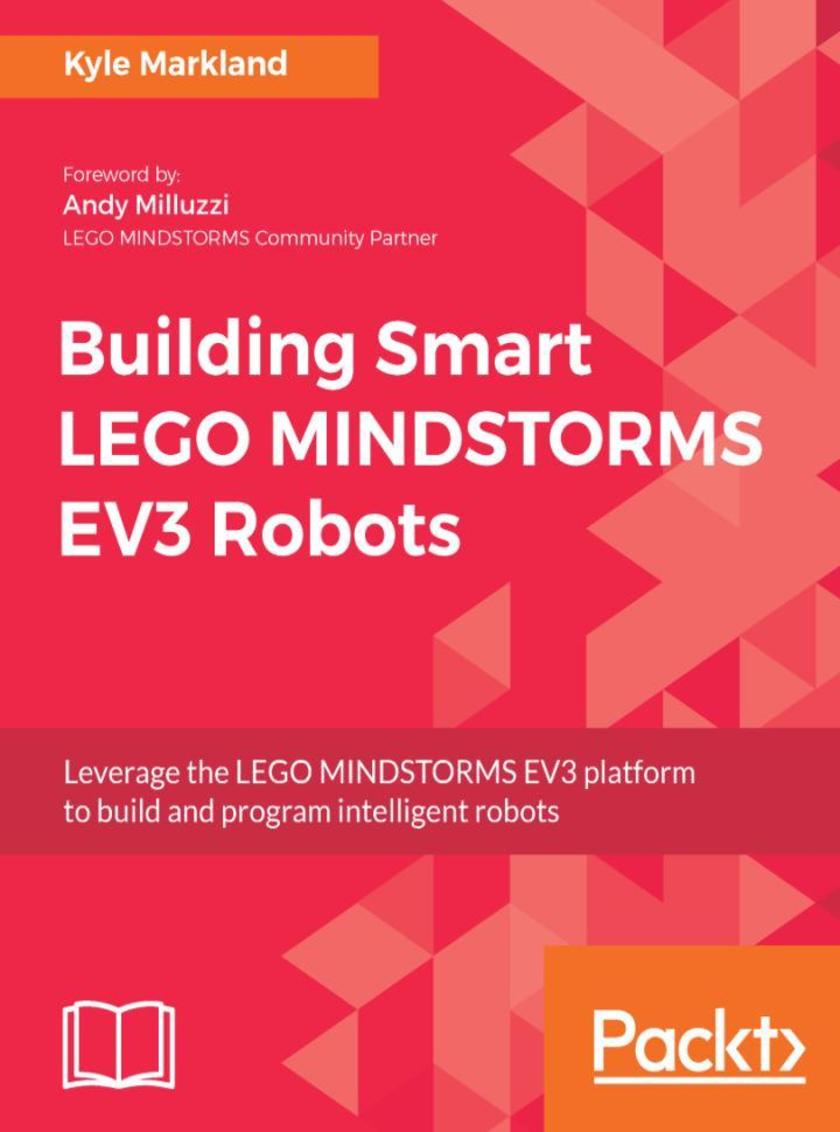
Building Smart LEGO MINDSTORMS EV3 Robots
¥54.49
Build and program smart robots with the EV3. About This Book ? Efficiently build smart robots with the LEGO MINDSTORMS EV3 ? Discover building techniques and programming concepts that are used by engineers to prototype robots in the real world ? This project-based guide will teach you how to build exciting projects such as the objecta-tracking tank, ultimate all-terrain vehicle, remote control race car, or even a GPS-navigating autonomous vehicle Who This Book Is For This book is for hobbyists, robotic engineers, and programmers who understand the basics of the EV3 programming language and are familiar with building with LEGO Technic and want to try some advanced projects. If you want to learn some new engineering techniques and take your experience with the EV3 to the next level, then this book is for you. What You Will Learn ? Understand the characteristics that make a robot smart ? Grasp proportional beacon following and use proximity sensors to track an object ? Discover how mechanisms such as rack-and-pinion and the worm gear work ? Program a custom GUI to make a robot more user friendly ? Make a fun and quirky interactive robot that has its own personality ? Get to know the principles of remote control and programming car-style steering ? Understand some of the mechanisms that enable a car to drive ? Navigate to a destination with a GPS receiver In Detail Smart robots are an ever-increasing part of our daily lives. With LEGO MINDSTORMS EV3, you can now prototype your very own small-scale smart robot that uses specialized programming and hardware to complete a mission. EV3 is a robotics platform for enthusiasts of all ages and experience levels that makes prototyping robots accessible to all. This book will walk you through six different projects that range from intermediate to advanced level. The projects will show you building and programming techniques that are used by engineers in the real world, which will help you build your own smart robot. You'll see how to make the most of the EV3 robotics platform and build some awesome smart robots. The book starts by introducing some real-world examples of smart robots. Then, we'll walk you through six different projects and explain the features that allow these robots to make intelligent decisions. The book will guide you as you build your own object-tracking tank, a box-climbing robot, an interactive robotic shark, a quirky bipedal robot, a speedy remote control race car, and a GPS-navigating robot. By the end of this book, you'll have the skills necessary to build and program your own smart robots with EV3. Style and approach This book will introduce you to the world of smart robots, then guide you through six different projects that can be completed with the LEGO MINDSTORMS EV3. The projects range from intermediate to advanced difficulty. The book will enable you to learn by example, walking you through the building and programming for each project and teaching you about the engineering concepts that allow each smart robot to complete its mission.
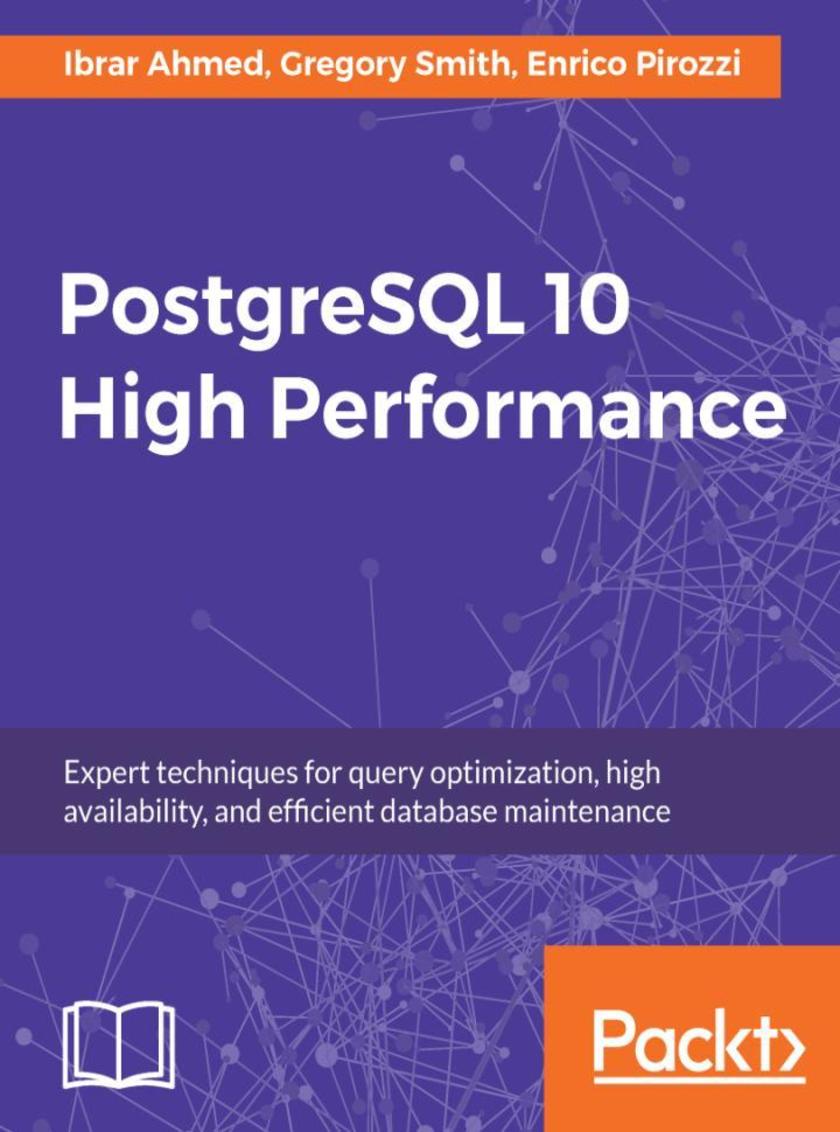
PostgreSQL 10 High Performance
¥81.74
Leverage the power of PostgreSQL 10 to design, administer and maintain a high-performance database solution About This Book ? Obtain optimal PostgreSQL 10 database performance, ranging from initial design to routine maintenance ? Fine tune the performance of your queries and avoid the common pitfalls that can slow your system down ? Contains tips and tricks on scaling successful database installations, and ensuring a highly available PostgreSQL solution Who This Book Is For This book is designed for database administrators and PostgreSQL architects who already use or plan to exploit the features of PostgreSQL 10 to design and maintain a high-performance PostgreSQL database. A working knowledge of SQL, and some experience with PostgreSQL will be helpful in getting the most out of this book. What You Will Learn ? Learn best practices for scaling PostgreSQL 10 installations ? Discover the best hardware for developing high-performance PostgreSQL applications ? Benchmark your whole system – from hardware to application ? Learn by real examples how server parameters impact performance ? Discover PostgreSQL 10 features for partitioning and parallel query ? Monitor your server, both inside and outside the database ? Design and implement a good replication system on PostgreSQL 10 In Detail PostgreSQL database servers have a common set of problems that they encounter as their usage gets heavier and requirements get more demanding. Peek into the future of your PostgreSQL 10 database's problems today. Know the warning signs to look for and how to avoid the most common issues before they even happen. Surprisingly, most PostgreSQL database applications evolve in the same way—choose the right hardware, tune the operating system and server memory use, optimize queries against the database and CPUs with the right indexes, and monitor every layer, from hardware to queries, using tools from inside and outside PostgreSQL. Also, using monitoring insight, PostgreSQL database applications continuously rework the design and configuration. On reaching the limits of a single server, they break things up; connection pooling, caching, partitioning, replication, and parallel queries can all help handle increasing database workloads. By the end of this book, you will have all the knowledge you need to design, run, and manage your PostgreSQL solution while ensuring high performance and high availability Style and approach This book has been organized in such a manner that will help you understand basic PostgreSQL 10 performance tuning to an advanced-level configuration.
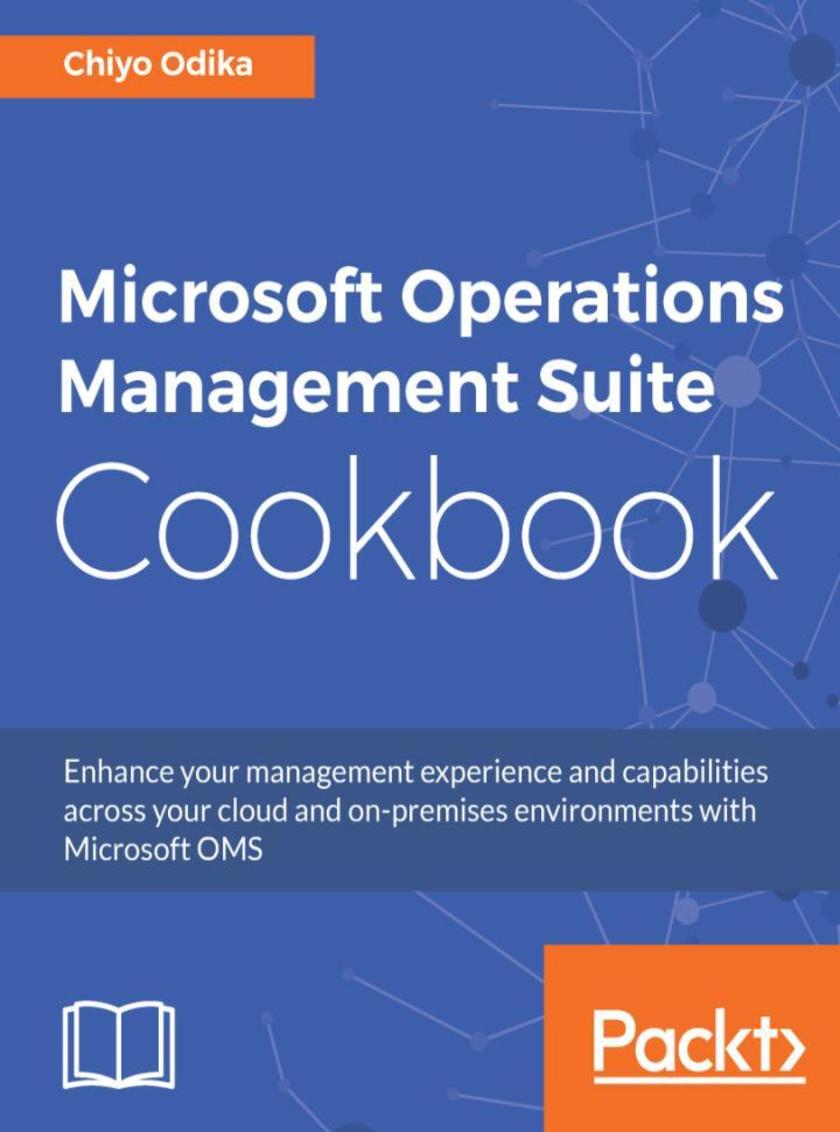
Microsoft Operations Management Suite Cookbook
¥73.02
Manage on-premises and cloud IT assets from one console About This Book ? Empower yourself with practical recipes to collect and analyze operational insights on Windows and Linux servers in your on premises datacenters and in any public cloud environments such as Azure and AWS. ? Build capabilities through practical tasks and techniques to collect and analyze machine data ? Address business challenges and discover means to accommodate workloads and instances in a low cost manner Who This Book Is For This book is written for the IT professional and general reader who is interested in technology themes such as DevOps, Big Data Analytics, and digital transformation concepts. Azure and other cloud platform administrators, cloud professionals, and technology analysts who would like to solve everyday problems quickly and efficiently with hybrid management tools available in the Microsoft product ecosystem will derive much value from this book. Prior experience with OMS 2012 would be helpful. What You Will Learn ? Understand the important architectural considerations and strategies for OMS ? Use advanced search query commands and strategies to derive insights from indexed data ? Make use of alerting in OMS such as alert actions, and available options for the entire lifecycle of the alert ? Discover some practical tips for monitoring Azure container service containers and clusters using OMS ? Review and use the backup options available through the Azure backup service, as well as data recovery options available through Azure Site Recovery (ASR) ? Understand how to advance important DevOps concepts within your IT organization ? Learn how to manage configurations and automate process In Detail Microsoft Operations Management Suite Cookbook begins with an overview of how to hit the ground running with OMS insights and analytics. Next, you will learn to search and analyze data to retrieve actionable insights, review alert generation from the analyzed data, and use basic and advanced Log search queries in Azure Log Analytics. Following this, you will explore some other management solutions that provide functionality related to workload assessment, application dependency mapping, automation and configuration management, and security and compliance. You will also become well versed with the data protection and recovery functionalities of OMS Protection and Recovery, and learn how to use Azure Automation components and features in OMS. Finally you will learn how to evaluate key considerations for using the Security and Audit solution, and working with Security and Compliance in OMS. By the end of the book, you will be able to configure and utilize solution offerings in OMS, understand OMS workflows, how to unlock insights, integrate capabilities into new or existing workflows, manage configurations, and automate tasks and processes. Style and approach This is a recipe based guide where early chapters introduce the main concepts and key capabilities, and the later chapters delve into more advance concepts.
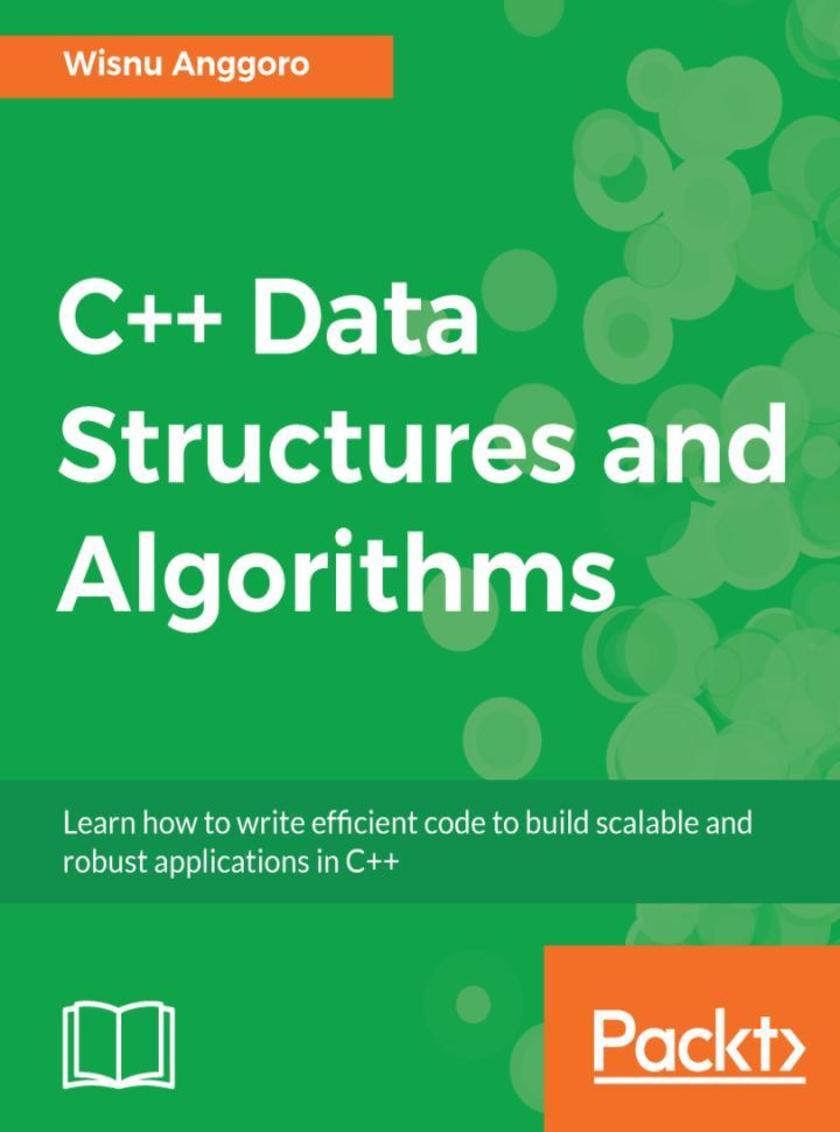
C++ Data Structures and Algorithms
¥81.74
Learn how to build efficient, secure and robust code in C++ by using data structures and algorithms - the building blocks of C++ About This Book ? Use data structures such as arrays, stacks, trees, lists, and graphs with real-world examples ? Learn the functional and reactive implementations of the traditional data structures ? Explore illustrations to present data structures and algorithms, as well as their analysis, in a clear, visual manner Who This Book Is For This book is for developers who would like to learn the Data Structures and Algorithms in C++. Basic C++ programming knowledge is expected. What You Will Learn ? Know how to use arrays and lists to get better results in complex scenarios ? Build enhanced applications by using hashtables, dictionaries, and sets ? Implement searching algorithms such as linear search, binary search, jump search, exponential search, and more ? Have a positive impact on the efficiency of applications with tree traversal ? Explore the design used in sorting algorithms like Heap sort, Quick sort, Merge sort and Radix sort ? Implement various common algorithms in string data types ? Find out how to design an algorithm for a specific task using the common algorithm paradigms In Detail C++ is a general-purpose programming language which has evolved over the years and is used to develop software for many different sectors. This book will be your companion as it takes you through implementing classic data structures and algorithms to help you get up and running as a confident C++ programmer. We begin with an introduction to C++ data structures and algorithms while also covering essential language constructs. Next, we will see how to store data using linked lists, arrays, stacks, and queues. Then, we will learn how to implement different sorting algorithms, such as quick sort and heap sort. Along with these, we will dive into searching algorithms such as linear search, binary search and more. Our next mission will be to attain high performance by implementing algorithms to string datatypes and implementing hash structures in algorithm design. We'll also analyze Brute Force algorithms, Greedy algorithms, and more. By the end of the book, you'll know how to build components that are easy to understand, debug, and use in different applications. Style and approach Readers will be taken through an indispensable list of data structures and algorithms so they can confidently begin coding in C++.




 购物车
购物车 个人中心
个人中心



